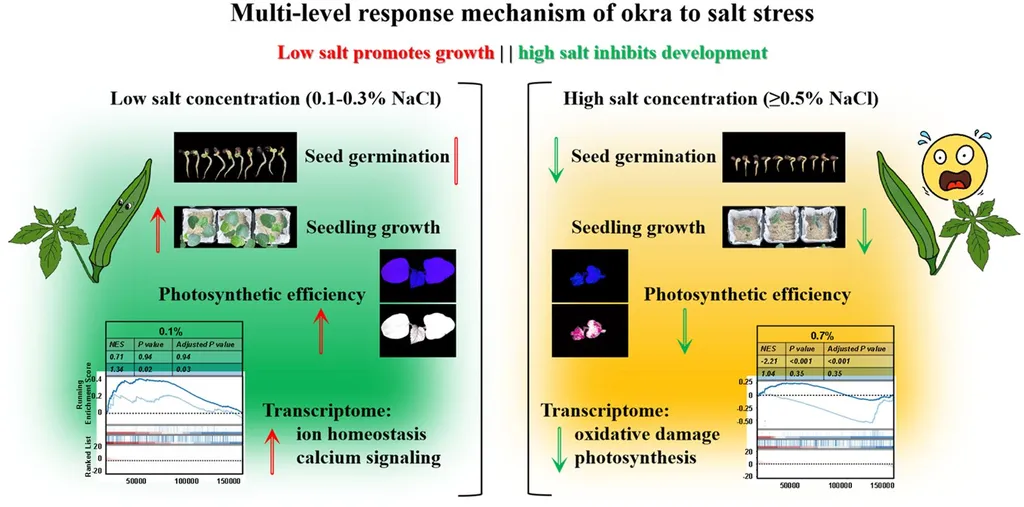In the face of escalating global salinization, understanding how crops fare under salt stress is becoming increasingly vital. A recent study led by Xiaowei Cao from the College of Engineering at Nanjing Agricultural University has developed a novel approach to monitor and assess plant growth vitality, with a focus on okra seedlings. The research, published in *Frontiers in Plant Science* (translated as “Plant Science Frontiers”), introduces a method that could revolutionize how we evaluate crop resilience in challenging environments.
Cao and his team have harnessed the power of advanced computer vision to create a system that can automatically capture and analyze image data of okra seedlings from germination to growth. The centerpiece of this system is the YOLOv11-HSECal model, an optimized version of the traditional YOLOv11-seg model. By incorporating the HGNetv2 backbone, Slim-Neck feature fusion, and EMAttention mechanisms, the team achieved significant improvements in model performance. “The YOLOv11-HSECal model not only enhances accuracy but also reduces computational complexity, making it more efficient for real-time monitoring,” Cao explained.
The system’s ability to calculate leaf area and growth rate provides a comprehensive view of seedling vitality. This is particularly crucial under salt stress conditions, where growth can be significantly inhibited. The researchers conducted experiments with varying NaCl concentrations, ranging from 0 to 60 mmol/L, to assess the impact on okra seedlings. The results clearly demonstrated the inhibitory effects of salt stress, offering valuable insights into how different levels of salinity affect plant growth.
The implications of this research extend beyond the laboratory. In the agricultural sector, the ability to monitor crop growth in real-time can lead to more informed decision-making, ultimately improving yield and resilience. “This technology has the potential to be a game-changer in smart agriculture,” Cao noted. “By providing accurate and timely data, farmers can take proactive measures to mitigate the effects of salt stress and other environmental challenges.”
Moreover, the YOLOv11-HSECal model’s efficiency and accuracy make it a promising tool for broader applications in plant science. As the global population grows and arable land becomes scarcer, the need for innovative solutions to enhance crop productivity becomes ever more pressing. This research offers a glimpse into the future of agricultural technology, where data-driven approaches can help us meet these challenges head-on.
The study, published in *Frontiers in Plant Science*, represents a significant step forward in the field of plant science and agritech. By combining advanced computer vision with traditional plant biology, Cao and his team have opened new avenues for research and practical application. As we continue to grapple with the impacts of climate change and environmental degradation, such innovations will be crucial in ensuring food security and sustainable agriculture.

